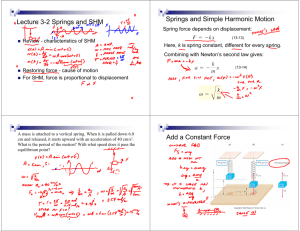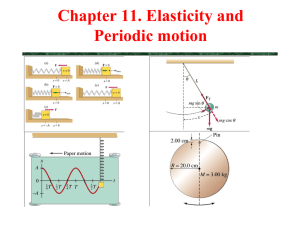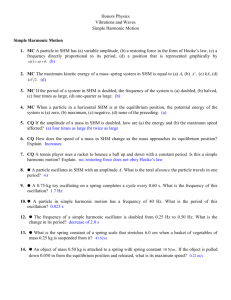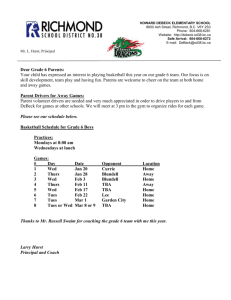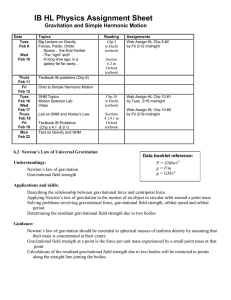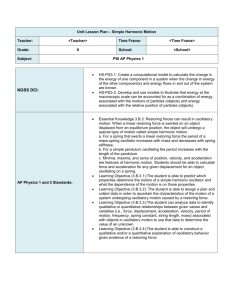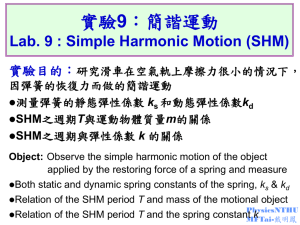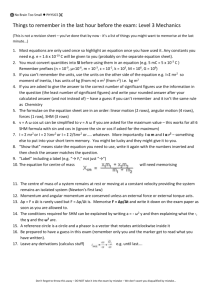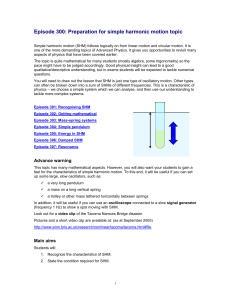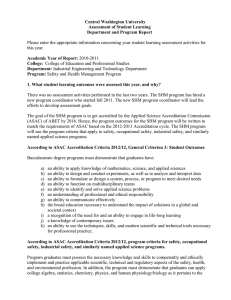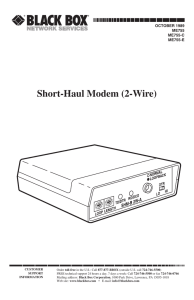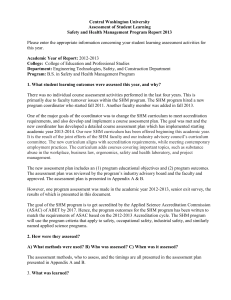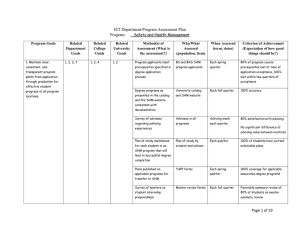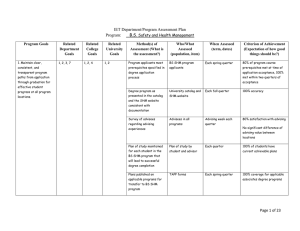Simple Harmonic Motion SHM
advertisement
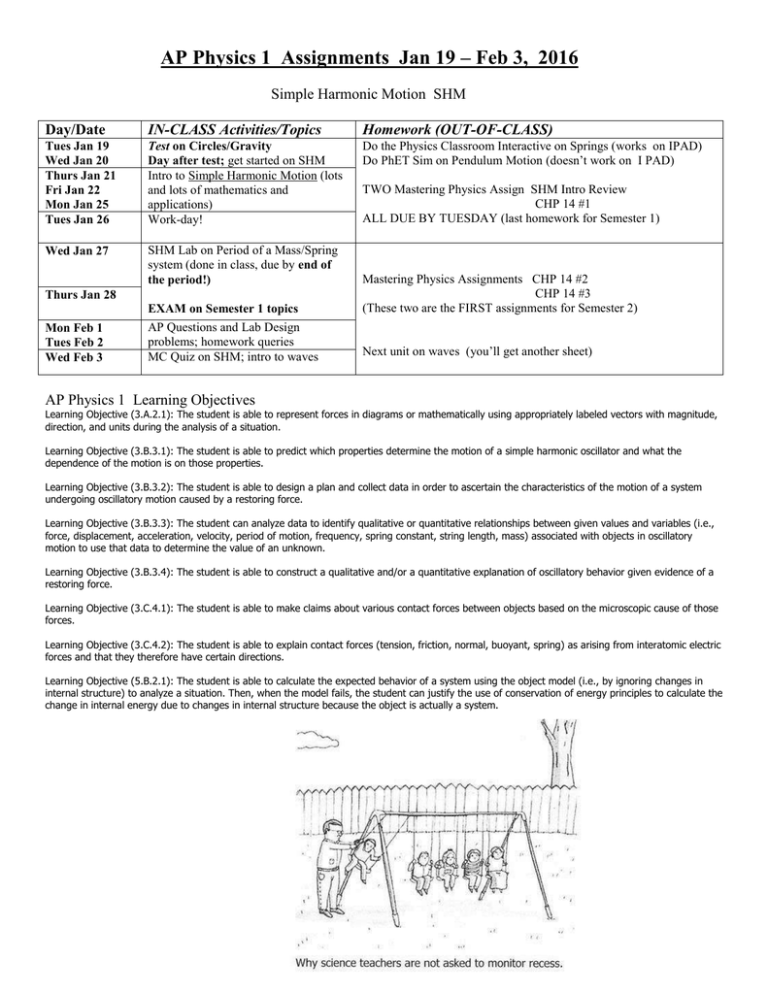
AP Physics 1 Assignments Jan 19 – Feb 3, 2016 Simple Harmonic Motion SHM Day/Date IN-CLASS Activities/Topics Homework (OUT-OF-CLASS) Tues Jan 19 Wed Jan 20 Thurs Jan 21 Fri Jan 22 Mon Jan 25 Tues Jan 26 Test on Circles/Gravity Day after test; get started on SHM Intro to Simple Harmonic Motion (lots and lots of mathematics and applications) Work-day! Do the Physics Classroom Interactive on Springs (works on IPAD) Do PhET Sim on Pendulum Motion (doesn’t work on I PAD) Wed Jan 27 SHM Lab on Period of a Mass/Spring system (done in class, due by end of the period!) EXAM on Semester 1 topics Mastering Physics Assignments CHP 14 #2 CHP 14 #3 (These two are the FIRST assignments for Semester 2) AP Questions and Lab Design problems; homework queries MC Quiz on SHM; intro to waves Next unit on waves (you’ll get another sheet) Thurs Jan 28 Mon Feb 1 Tues Feb 2 Wed Feb 3 TWO Mastering Physics Assign SHM Intro Review CHP 14 #1 ALL DUE BY TUESDAY (last homework for Semester 1) AP Physics 1 Learning Objectives Learning Objective (3.A.2.1): The student is able to represent forces in diagrams or mathematically using appropriately labeled vectors with magnitude, direction, and units during the analysis of a situation. Learning Objective (3.B.3.1): The student is able to predict which properties determine the motion of a simple harmonic oscillator and what the dependence of the motion is on those properties. Learning Objective (3.B.3.2): The student is able to design a plan and collect data in order to ascertain the characteristics of the motion of a system undergoing oscillatory motion caused by a restoring force. Learning Objective (3.B.3.3): The student can analyze data to identify qualitative or quantitative relationships between given values and variables (i.e., force, displacement, acceleration, velocity, period of motion, frequency, spring constant, string length, mass) associated with objects in oscillatory motion to use that data to determine the value of an unknown. Learning Objective (3.B.3.4): The student is able to construct a qualitative and/or a quantitative explanation of oscillatory behavior given evidence of a restoring force. Learning Objective (3.C.4.1): The student is able to make claims about various contact forces between objects based on the microscopic cause of those forces. Learning Objective (3.C.4.2): The student is able to explain contact forces (tension, friction, normal, buoyant, spring) as arising from interatomic electric forces and that they therefore have certain directions. Learning Objective (5.B.2.1): The student is able to calculate the expected behavior of a system using the object model (i.e., by ignoring changes in internal structure) to analyze a situation. Then, when the model fails, the student can justify the use of conservation of energy principles to calculate the change in internal energy due to changes in internal structure because the object is actually a system.
